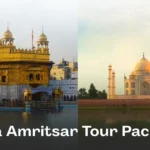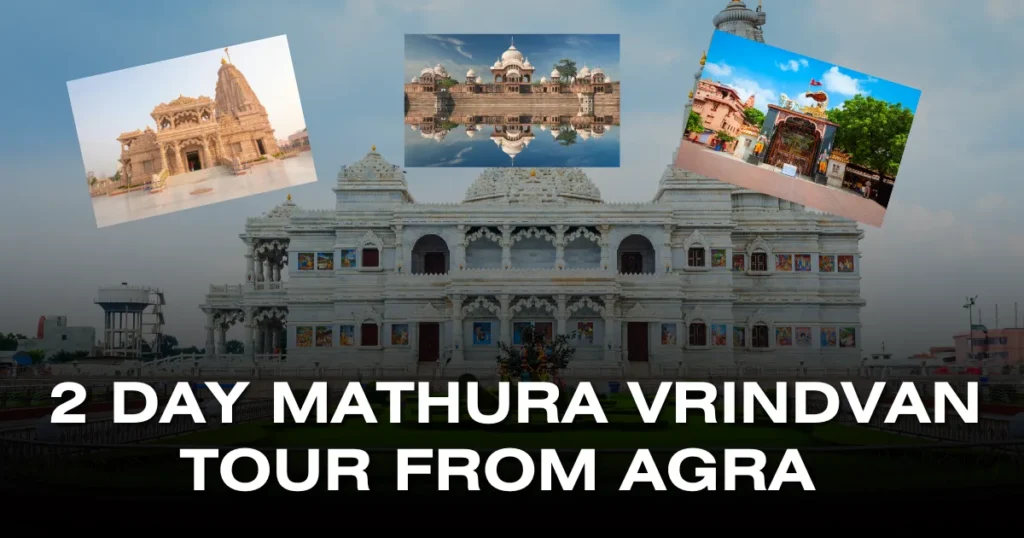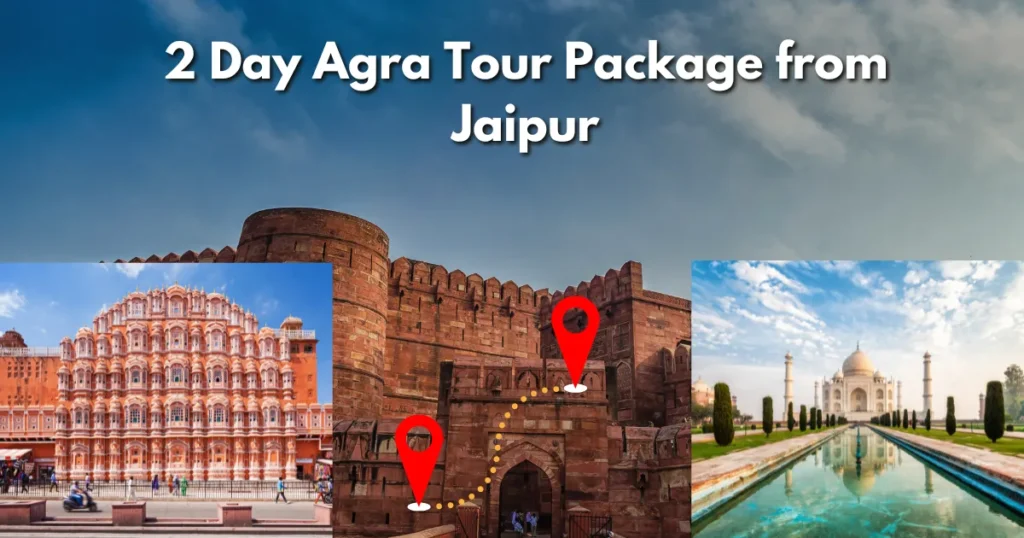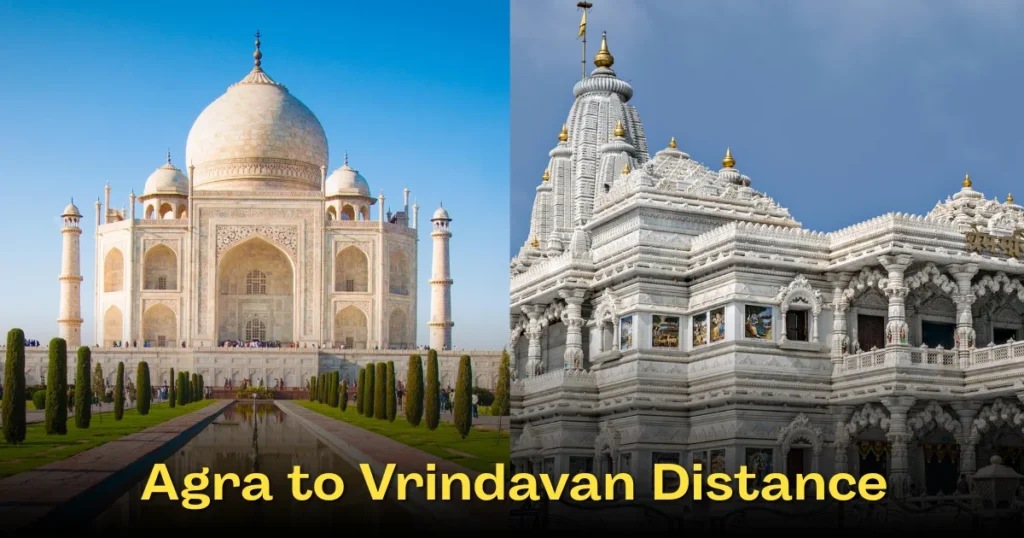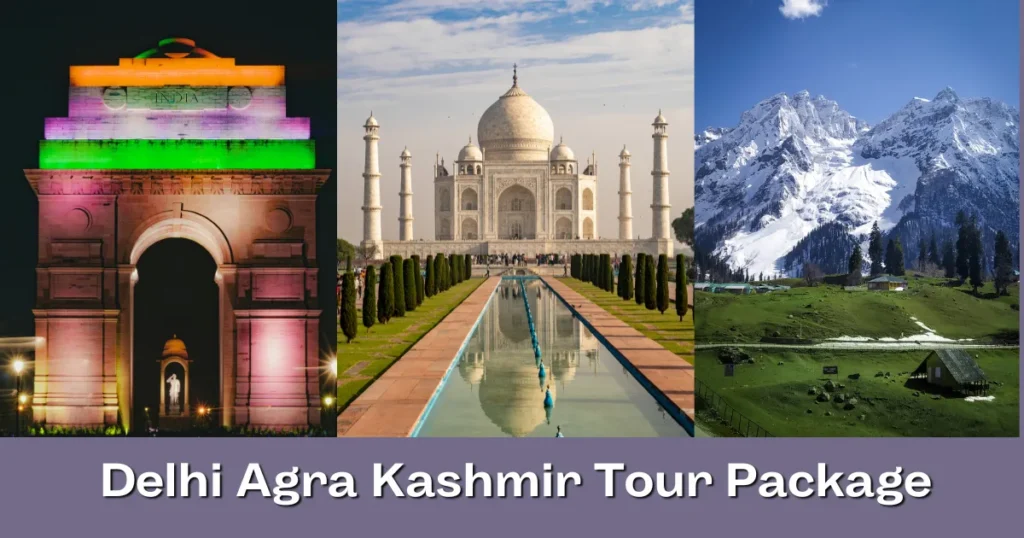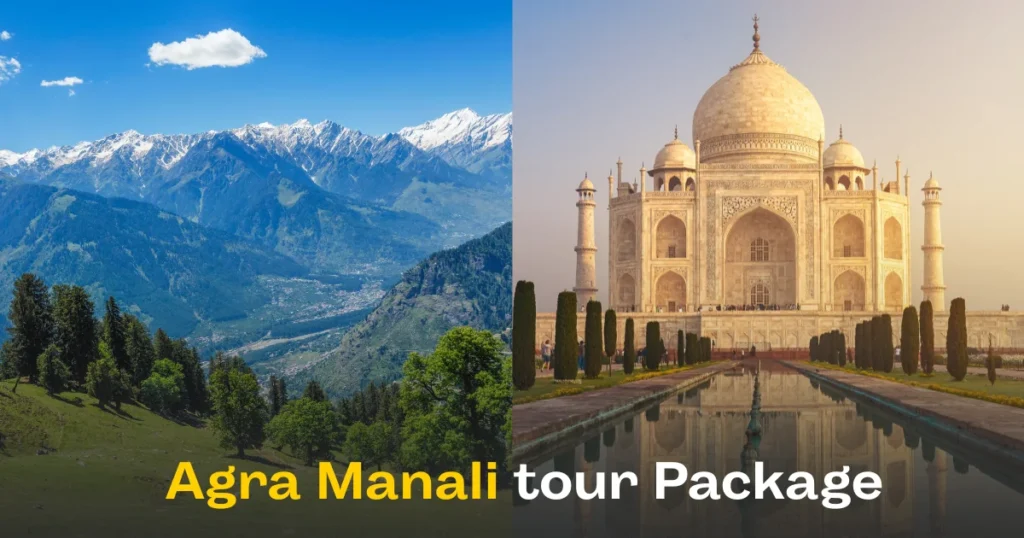The Itmad ud Daula Tomb, located on the banks of the Yamuna River in Agra, is often called the “Baby Taj” of India.
Empress Nur Jahan built this beautiful tomb for her father, Mirza Ghiyas Beg, between 1622 and 1628. Even though it is smaller than the Taj Mahal, many people say it inspired the design of the Taj.
Craftsmen used white marble, decorated it with colorful stones, and designed a peaceful garden around the tomb. It’s a perfect place for travelers who love quiet spots, historical stories, and beautiful architecture. In 2025, with new updates and better facilities, visiting the Itmad ud Daula Tomb is more enjoyable than ever.
Table of Contents
ToggleWhy is It Called the Baby Taj of India?
-
The Itmad ud Daula Tomb was the first Mughal building made fully of white marble.
-
Builders completed it before the Taj Mahal and used similar design styles, such as marble inlay, gardens, and decorative patterns.
-
It has beautiful floral carvings and lattice screens that look like early versions of what we see at the Taj Mahal.
-
Many visitors feel it is like a smaller, simpler version of the Taj Mahal – which is why they call it the “Baby Taj”.
-
Nur Jahan built this tomb for her father, which adds emotional value.
What Are the 2025 Timings and Entry Fees for the Itmad ud Daula Tomb?
-
Opening Hours: 6:00 AM to 6:00 PM daily
-
Entry Fee (2025):
-
₹30 for Indian tourists
-
₹310 for foreign tourists
-
Free for children below 15 years
-
-
Latest Update:
-
LED lighting has been added around the garden.
-
The ASI team cleaned the tomb walls and carvings in early 2025.
-
More signs and tourist help desks are now available.
-
-
Visitors can choose to skip masks, but they should follow basic health safety.
How Can You Reach Itmad ud Daula Tomb from Central Agra?
-
From Agra Cantt Railway Station: About 20 minutes by taxi or auto.
-
From Taj Mahal or Agra Fort: Around 10–15 minutes by e-rickshaw or tuk-tuk.
-
Ask for the Moti Bagh area. Clear road signs will guide you to the gate.
-
It’s best to go early in the morning when the traffic is light and the weather is cool.
-
You can also rent a bicycle or book a guided tour through your hotel or Agra Tourism.
What Will You See Inside the Itmad ud Daula Tomb?
-
Beautiful white marble walls with designs made from colorful stones like jasper and lapis lazuli.
-
Delicate jali (lattice) windows that let sunlight come through softly.
-
A square garden (charbagh) with walking paths and small water channels.
-
Four small towers (minarets) at each corner of the tomb.
-
No large dome – the tomb has a flat roof with small decorative pavilions.
Every part of the tomb is full of detail, telling the story of love, art, and history.
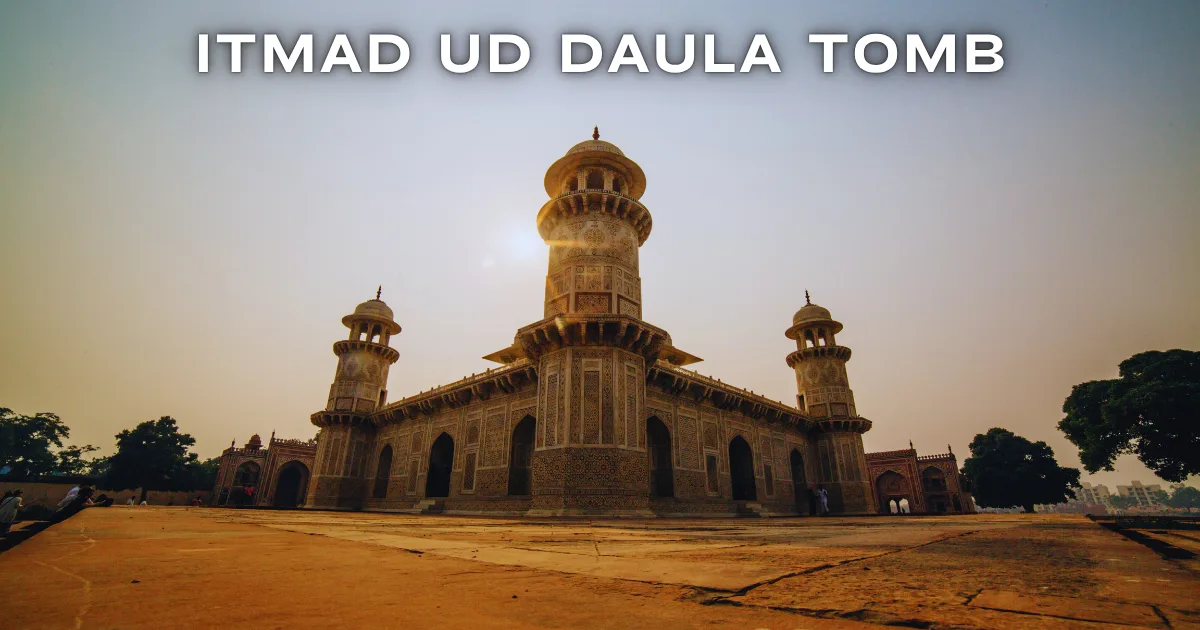
Which Hotels Are Close to the Itmad ud Daula Tomb?
-
The Oberoi Amarvilas – Luxury stay with Taj views, 2 km away.
-
Hotel Clarks Shiraz – Heritage hotel with good reviews.
-
Courtyard by Marriott Agra – Offers guided tours.
-
Taj Villa Hotel – Affordable and clean stay with quick access.
-
Hotel Taj Resorts – Mid-range, with easy cab bookings to the tomb.
Many hotels in Agra offer city tours that include the Itmad ud Daula Tomb. Booking one makes your visit more relaxed and informative.
When Is the Best Time to Visit the Itmad ud Daula?
-
Best Months: October to March (cool and dry weather).
-
Best Time of Day:
-
Early morning (6:00–8:00 AM) – Less crowd, soft sunlight.
-
Late afternoon (4:00–6:00 PM) – Beautiful golden light.
-
-
Avoid: Midday during summer (very hot) and major holidays (more crowd).
Plan your visit when the light is soft, and you can take beautiful photos without rush.
What Is the History Behind the Itmad ud Daula?
-
Empress Nur Jahan built the tomb for her father, who served as a top official in Emperor Jahangir’s court.
-
It took about six years to build and was completed in 1628.
-
The tomb has graves of both Nur Jahan’s parents, placed side by side.
-
Nur Jahan built this tomb to show her love and respect, making it one of the few Mughal structures created by a woman.
-
Its design marked a change in Mughal architecture, moving from red sandstone to white marble.
This tomb is not just a structure – it’s a daughter’s tribute and a symbol of love.
Why Should You Add Itmad ud Daula Tomb to Your Agra Trip?
-
It’s less crowded and peaceful compared to the Taj Mahal.
-
It gives you a chance to see Mughal art up close.
-
You’ll understand the story of how Mughal architecture evolved.
-
Great for photographers, history lovers, and travelers who want to explore beyond popular spots.
-
It helps complete your Agra experience – showing not just the grand Taj, but also the tomb that came before.
FAQs – Itmad ud Daula Tomb (Click to Expand)
What is the meaning of Itmad ud Daula?
Itmad ud Daula means “Pillar of the State.” It was the title given to Mirza Ghiyas Beg, the father of Nur Jahan, who built the tomb in his memory.
Is Itmad ud Daula Tomb open every day?
Yes, the tomb is open daily from 6:00 AM to 6:00 PM throughout the year.
How much time is needed to explore Itmad ud Daula Tomb?
Usually, visitors spend 45 minutes to 1 hour exploring the tomb and its gardens peacefully.
What makes Itmad ud Daula different from the Taj Mahal?
It is smaller and more personal. It was the first to use marble and inlay work, which later became common in the Taj Mahal.
Can I take photos inside the tomb?
Yes, photography is allowed, but tripods and drones are not permitted without permission.
Is there parking near Itmad ud Daula Tomb?
There is limited parking nearby. It is best to take an e-rickshaw or taxi from your hotel.
Can I visit Itmad ud Daula Tomb and Taj Mahal in one day?
Yes, they are close to each other. Many tourists visit both sites in the same day.
Is the tomb wheelchair accessible?
The main garden is accessible. However, some steps may make entering the inner tomb slightly difficult.
Are guided tours available?
Yes, local guides and audio guides are available. Many hotels also offer tour packages including the tomb.
Which is the nearest airport to reach the tomb?
The nearest airport is Agra Airport, about 10 km from Itmad ud Daula Tomb. You can take a taxi from there easily.




